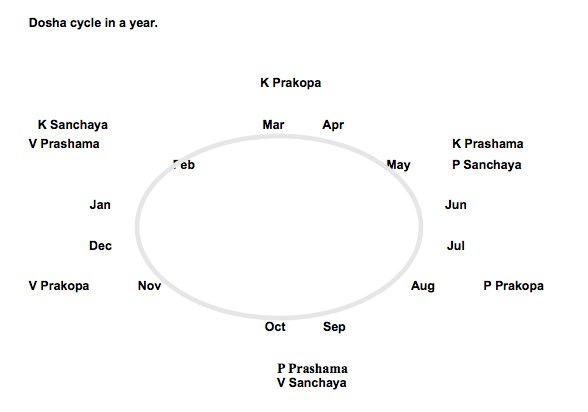Ayurveda and the Seasonal Regimen: Understanding Ritucharya
Ayurveda, a traditional system of medicine that originated in India, emphasizes the importance of maintaining a balance between the mind, body, and spirit to promote overall health and well-being. One of the ways to achieve this balance is through the seasonal regimen or Ritucharya, which provides guidelines on diet and lifestyle modifications to adapt to the changing seasons.
The Ritucharya divides the year into two parts, accumulation (Adana) and release (Visarga), based on the dominant energy principle – hot (Pitta) and cold (Kapha) respectively. During the accumulation period, which is between the winter solstice and summer solstice, there is a dominance of the sun or heating principle (Pitta energy), which leads to an increase in heat, dryness, and depletion of the Dhatus or tissues. As a result, physical strength decreases, and the incidence of diseases increases.
On the other hand, during the release period, which is between the summer solstice and winter solstice, there is a dominance of the moon or cool principle (Kapha energy), which leads to an increase in strength and immunity, and a decrease in the incidence of diseases.
The doshas – Vata, Pitta, and Kapha – also have a cycle of accumulation, aggravation, and palliation during the year. Kapha is aggravated in spring (mid-February to mid-June), Pitta in summer (mid-June to mid-October), and Vata in fall and winter (mid-October to mid-February). To prevent imbalances and diseases, it is essential to adjust our diet and lifestyle according to the season and the dosha cycle.
The seasonal regimen includes dietary modifications, such as consuming foods that are appropriate for the season and avoiding foods that are likely to increase the respective doshas. For example, in the summer, it is advisable to consume cooling and hydrating foods like watermelon, cucumber, and coconut water, and avoid hot and spicy foods that can aggravate Pitta.
Lifestyle modifications, such as adjusting the daily routine (Dinacharya), also play a crucial role in maintaining balance during the changing seasons. This includes practices like waking up early, practicing yoga and meditation, and getting adequate sleep.
In addition, Ayurveda also recommends cleansing techniques like Vamana (herb-induced emesis), Virechana (herb-induced purgation), and Basti (herb-induced enema) to eliminate the accumulated doshas and prevent seasonal diseases. However, it is essential to consult with a qualified Ayurvedic practitioner before undergoing any of these techniques, as they may not be suitable for everyone and can have potential side effects.
It is important to note that the seasonal regimen should be adjusted based on an individual’s constitution or Prakriti, which is a unique balance of the three doshas. Consulting with an Ayurvedic practitioner can help identify an individual’s Prakriti and make personalized recommendations for diet and lifestyle modifications.
In conclusion, Ayurveda’s seasonal regimen or Ritucharya provides a holistic approach to maintaining health and well-being by adapting to the changing seasons and dosha cycles. By following the guidelines of the Ritucharya, one can prevent imbalances and diseases and achieve optimal health and vitality.




